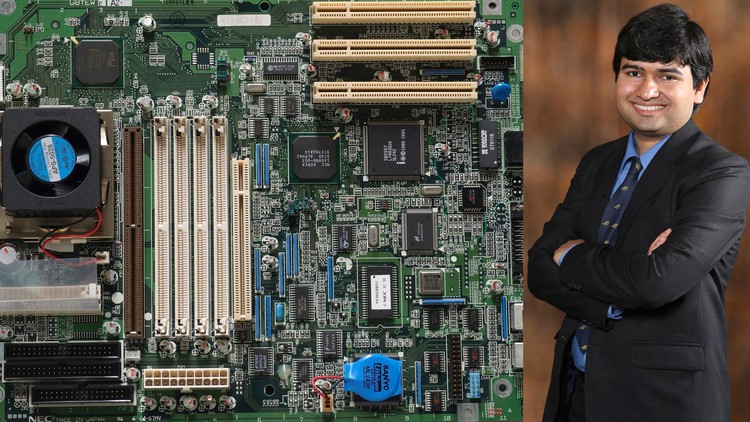When purchasing a new computer, have you wondered what “3,” “5,” and “7” mean in Core i3, i5, or i7? (Hint: these are not the number of cores in the processor!) Did you know that when comparing two floating point variables, using the “==” in your programs may return False even though the variables are expected to be equal? (“==” is not the best way to compare two float variables!) Did you know that a naive statement like i++ could lead to an overflow in your C++ program? Learn the explanations to these and many more intriguing questions in this course!
Ace data representation, number representation, twos complement, IEEE floating point representation, binary arithmetic questions in competitive exams, job interviews, and computer organization and architecture course exams. Genuinely understand the representation of various kinds of data (including integers, real numbers, negative numbers, characters, images, and sound) in modern computers.
Specifically, the course will cover the following in detail.
-
What is a computer?
-
Basic computer organization
-
What is a program?
-
Generations of programming languages
-
What is machine language and assembly language?
-
What are high-level languages?
-
What is the computer level hierarchy in modern computers?
-
What is hardware?
-
What is software?
-
What is von Neumann machine?
-
How do instructions execute in a modern computer?
-
What is multi-core processor?
-
What are bits and bytes?
-
What are binary numbers?
-
How to convert binary numbers to decimal?
-
How to convert decimal numbers to binary?
-
What are hexadecimal numbers and why are they needed?
-
What is the range of numbers that can be expressed in a given memory space?
-
How to add binary numbers?
-
What is arithmetic overflow?
-
How to prevent overflow in C++ programs?
-
How to represent negative integers in computer’s memory?
-
How to convert an integer into twos complement representation?
-
How to add twos complement numbers?
-
How to detect overflow in twos complement number addition?
-
What is zero extension and sign extension?
-
What are floating point numbers?
-
What is the IEEE floating point representation?
-
How to convert a real number from decimal to binary format?
-
How to represent a decimal number in IEEE floating point representation?
-
What are the reserved bit patterns in IEEE floating point format?
-
What are the errors introduced in computation due to floating point representation?
-
How to minimize approximation errors in floating point computations?
-
What is ASCII character representation?
-
What is Unicode character representation?
-
How are images represented in our computer’s memory?
-
How is sound represented in a computer’s memory?
30 day money back guaranteed by Udemy.
Wisdom scholarships. If you are interested in taking one of our courses but cannot purchase it, you can apply for a scholarship to enroll. Learn more about the application process at my website.
Introduction
Computer level hierarchy
Von Neumann architecture
Types of CPUs
Number representation
Hexadecimal numbers
Range of numbers and binary addition
Negative number representation
Twos complement arithmetic
IEEE floating point representation
Character representation
-
56What are floating point numbers
-
57Scientific number representation review
-
58IEEE floating point representation
-
59How to convert decimal fractions into binary
-
60How to convert decimal fractions into binary using multiplication method
-
61Activity-convert decimal fraction to binary
-
62Scientific notation practice
-
63Determining the sign & fraction fields in IEEE floating point representation
-
64Excess-127 notation for exponents
-
65Why use excess-127 representation for exponents
-
66Translating a twos complement number to excess-127
-
67Decimal to IEEE floating point end to end translation
-
68Activity-IEEEE floating point to decimal number conversion
-
69Special floating point numbers
-
70Floating point errors
-
71Reducing floating point errors
-
72Activity-floating point errors
-
73Floating point terminology
-
74Floating point addition and multiplication
-
75Quiz 10


